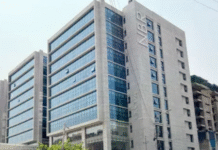Businesses and stakeholders on Thursday demanded frequent movement of container vessels between Chittagong port and the Pangaon Inland Container Terminal and lowering of rent of container vessels and port charges to make the latter functional and effective.
Conducting export and import activities through the Pangaon ICT at Keraniganj in Dhaka will not be viable for businesses, particularly from readymade garment sector, unless the issues are addressed, they said.
They also suggested the government for making the use of the terminal mandatory, along with providing incentives for some products, particularly those which are not so essential.
At a meeting with a committee of the National Board of Revenue on Pangaon port, traders and other stakeholders also requested the revenue board to put forward these issues to authorities concerned.
The revenue board formed the committee headed by its member (customs policy) Farid Uddin to identify the reasons behind practically no response of exporters and importers for using the Pangaon terminal and find out the way to make the terminal active.
The pangaon terminal has remained practically unutilised even after 20 months of its commissioning in November 2013 because of higher cost of container vessels and other port charges compared to that of Kamalapur Inland Container Depot and lack of containers and irregular schedule of vessels.
Bangladesh Inland Water Transport Authority (BIWTA) and the Chittagong Port Authority (CPA) jointly built the terminal at a cost of Tk 154 crore.
According to the Pangaon customs house, no goods have been exported through the port since its inception.
Only six vessels carrying mostly imported goods like used motor parts, assorted goods, paper board, flat rolled steel sheet, break oil, textile fabrics, non-woven fabrics , elevator lift and glassware products arrived at the port situated at Keraniganj on the bank of River Buriganga in the just concluded fiscal year.
Bangladesh Garment Manufacturers and Exporters Association member Iqbal Hossain who attended the meeting told New Age that using the port would not be viable for apparel exporters unless regular movement of vessels could be ensured.
RMG exporters work on time constraints with limited lead time to complete export procedures, he said.
‘We can send the goods to shipping agencies and freight forwarders in Chittagong within a day from Dhaka by road while it may take more time if goods are sent through Pangaon,’ he said.
RMG exporters can use the port if the shipping agencies and freight forwarders come forward and the government makes the use of the port cost effective, he said.
Bangladesh Freight Forwarders Association president Mahbubul Anam said that there was no alternative to making the port functional.
‘We suggested the government to ensure three things—regular and specific schedule of container vessels, making the use of the port mandatory for some products in import and export and providing incentives for the users,’ he said.
Officials of the revenue board said that they would prepare a working paper including outcome of the meeting and hold inter-ministerial meeting
with finance, shipping, commerce and other relevant ministries to solve the problems.
According to the Pangaon Customs House, traders have to bear a total cost of US$ 206.25 including vessel fare and port charges for transporting up to 15 tonnes of imported goods from Chittagong to Pangaon by rivers while it costs US$ 138.27 for transportation of the same volume of the imported goods from Chittagong to the Kamalapur ICD by railway.
The same volume of to-be-exported goods takes US$ 80.87 from Kamalapur to Chittagong by railway and US$ 206.25 from Pangaon to Chittagong by rivers, it said. Other charges are also higher at Pangaon.
Source: New Age










